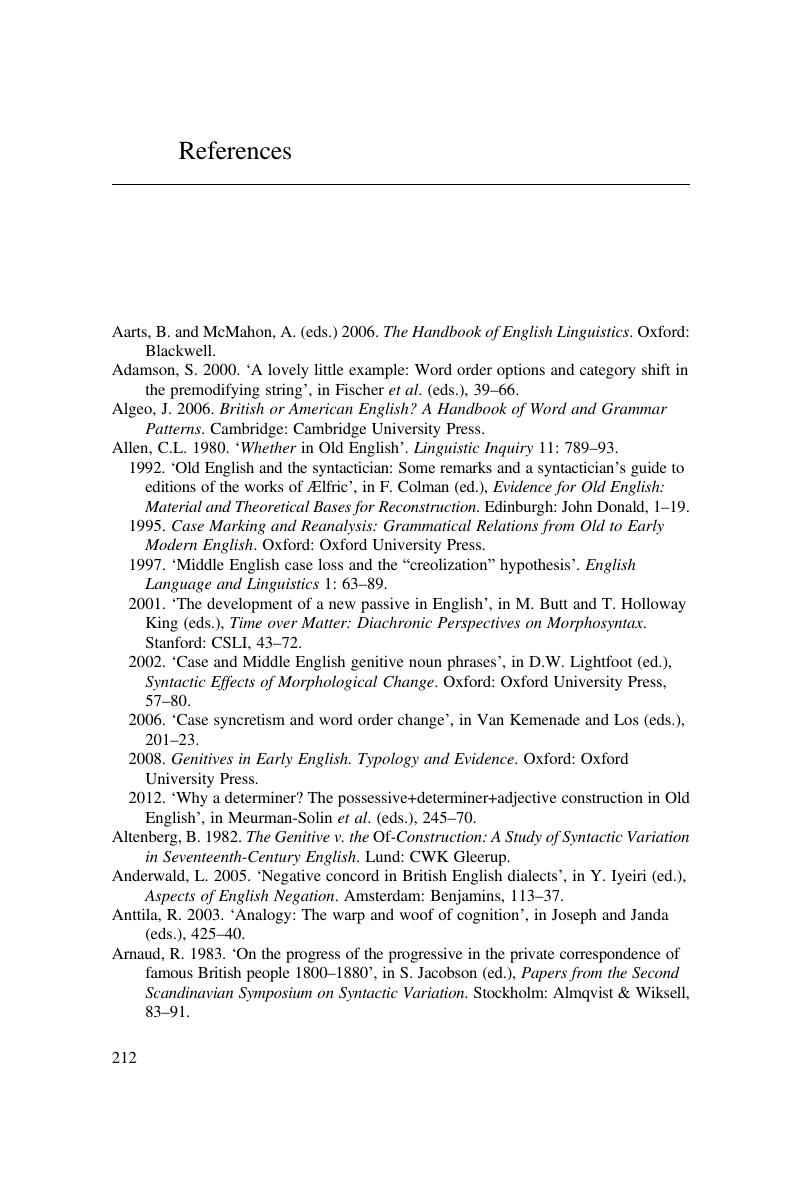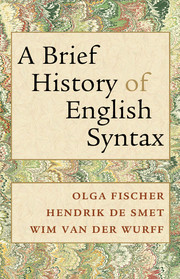Book contents
- A Brief History of English Syntax
- A Brief History of English Syntax
- Copyright page
- Contents
- Preface and Acknowledgements
- 1 Introduction
- 2 Data and Data Handling
- 3 Theoretical Models and Morpho-Syntactic Change
- 4 The Role of Contact in Syntactic Change in English
- 5 The Noun Phrase
- 6 The Verb Phrase
- 7 Clausal Constituents
- 8 Subordinate Clauses
- 9 Word Order
- References
- Name Index
- Subject Index
- References
References
Published online by Cambridge University Press: 19 May 2017
- A Brief History of English Syntax
- A Brief History of English Syntax
- Copyright page
- Contents
- Preface and Acknowledgements
- 1 Introduction
- 2 Data and Data Handling
- 3 Theoretical Models and Morpho-Syntactic Change
- 4 The Role of Contact in Syntactic Change in English
- 5 The Noun Phrase
- 6 The Verb Phrase
- 7 Clausal Constituents
- 8 Subordinate Clauses
- 9 Word Order
- References
- Name Index
- Subject Index
- References
Summary

- Type
- Chapter
- Information
- A Brief History of English Syntax , pp. 212 - 230Publisher: Cambridge University PressPrint publication year: 2017



